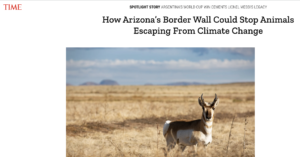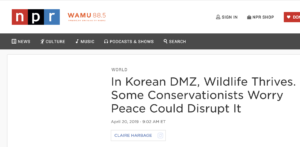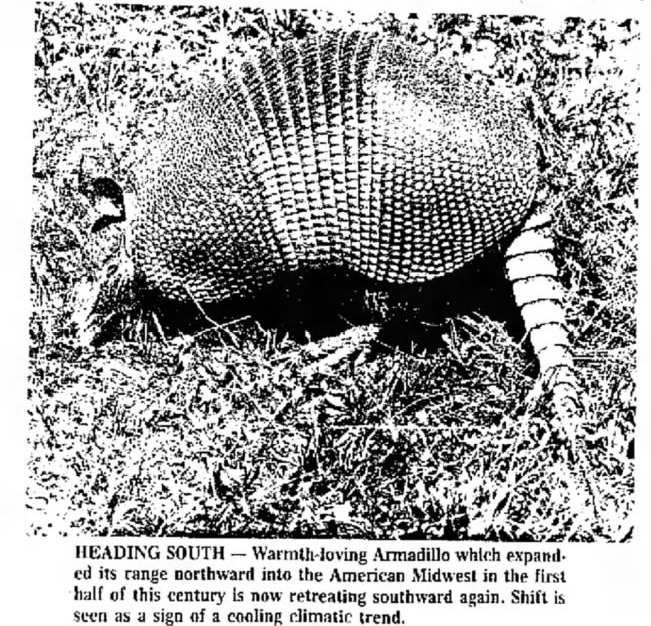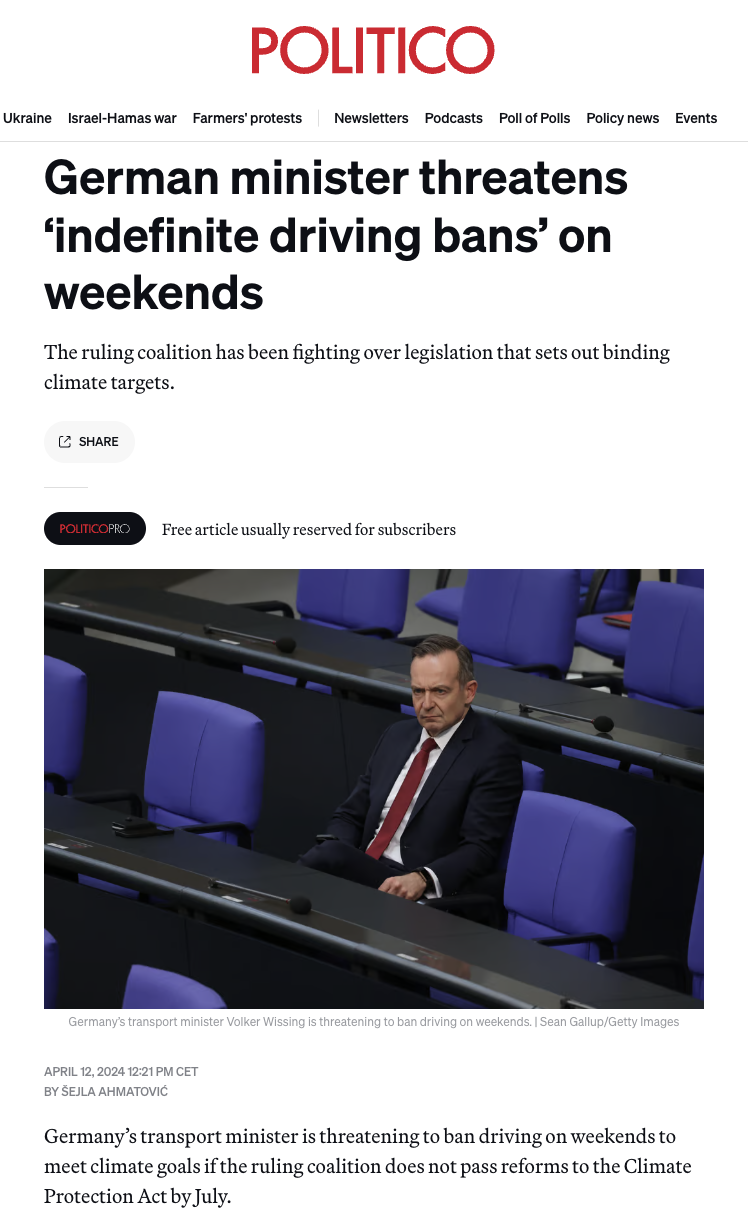https://time.com/6241549/arizona-border-wall-mexico-animals-climate-change/
Excerpts: As Arizona governor Doug Ducey’s term draws to a close, he’s rushing to cement his legacy: a bunch of battered, rusty shipping containers. Since Oct. 24, crews have double-stacked 900 of the metal boxes at the Arizona-Mexico border to create a 17 ft.-high barrier, with sheet metal welded between them …
… The fiercest opposition to Ducey’s project, however, is coming from environmental activists, who have used their bodies to halt construction over the past week. The reason? This corner of southwestern Arizona is one of the most wildlife-rich parts of the U.S., home to mountain lions, javelinas, black bears, and visiting jaguars and ocelots. All these animals roam back and forth across the U.S.-Mexico border to find food, water, and mates. …
…. As global warming alters conditions in animals’ existing habitats, scientists say the biggest mass migration of animals since the Ice Age is getting underway. It will often be blocked by human borders, thanks to a worldwide frenzy of wall-building over the last few decades. ….
Researchers report that wildlife cameras set up near the container wall have already captured coyotes and foxes unsuccessfully trying to cross it. Conservation advocates say the wall is a threat to those species’ survival and reproduction. …
Climate change will turbo-charge that threat. As global warming alters conditions in animals’ existing habitats, scientists say the biggest mass migration of animals since the Ice Age is getting underway. It will often be blocked by human borders, thanks to a worldwide frenzy of wall-building over the last few decades. A 2021 study by U.K.-based ecologists found that in a high emissions scenario, 16% of non-flying mammals would see more than half of their climatic niche—locations with conditions in which they can survive—move beyond border barriers they can’t cross by 2070. The U.S.-Mexico wall is especially problematic: because of its position, cutting east-west across a massive wildlife region, the researchers wrote, it “may be one of the worst international borders on the planet along which to build such a wall.”
…
Whatever she does, hundreds more miles of the U.S. border wall are likely to remain in place, with President Joe Biden having dismissed calls to tear it down. That will leave wildlife stuck between a wall and a climate-changed place.
#
2019 NPR: In Korean DMZ, Wildlife Thrives. Some Conservationists Worry Peace Could Disrupt It
#
Bill McKibben in LA Times urges more immigration to stop ‘white America’ from ‘pulling the lever for climate deniers’ – Meanwhile, ‘Latinos were eager for environmental progress’ – Excerpt: “…white America has fallen short. Election after election, native-born and long-standing citizens pull the lever for climate deniers, for people who want to shut down the Environmental Protection Agency, for the politicians who take huge quantities of cash from the Koch brothers and other oil barons. By contrast, a 2012 report by the Sierra Club and the National Council of La Raza found that Latinos were eager for environmental progress. Seventy-seven percent of Latino voters think climate change is already happening, compared with just 52% of the general population; 92% of Latinos think we have “a moral responsibility to take care of God’s creation here on Earth.” … The future beckons them, and so changes of the kind we’ll need to deal with climate change are easier to conceive. … We need immigrants to this nation engaged in public life, as soon and as fully as possible. It’s not just the moral thing to do, it’s a key to our future.”
#
Armadillos were the mascot for both 1970s global cooling fears and the mascot for current global warming fears!
23 Apr 1973, Page 21 – New Castle News at Newspapers.com
#
2011: Scientific American: ‘Armadillo Moves North Across a Warmer North America – The armadillo is moving north thanks to climate change’ – Some of that migration can be attributed to opportunity: The armadillo in particular has been moving northward since it arrived in Texas in the 1880s and Florida in the 1920s, according to Colleen McDonough, a biology professor at Valdosta State University in Georgia. Some, however, is clearly triggered by a changing climate. Armadillos have settled into southern Illinois, Indiana, Kansas and Missouri – all areas that were “totally unexpected,” McDonough said.
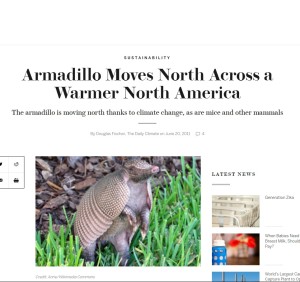
Watch: Exclusive clip of ‘Climate Hustle’ on Fox News – Steve Doocy & Marc Morano reveal mystery climate mascot animal – The Armadillo!

